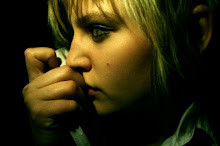I combined the 500 Drawings and Derive projects together in a body of work that became the Dice Game. Taking the rule and walking elements of the derive and the definition of drawing, which did not state the necessity of an author or artist, I drew up 6 directions I thought I could try next. These included drawing machines, drawing by rules [eg. throwing a dice with every number equating to a different mark or direction]. I couldn't decide and so I decided to throw a dice to decide. [ the use of dice was one method of rule-making used in the derive]. It chose the walking drawing where I would use a rule to follow a route and make a continuous mark using some kind of drawing machine. I had a basic design that was something like the things they use to mark the lines on a football pitch. Simon suggested a craft shop in the Merrion Centre where I could buy wheels for my machine. In the shop I noticed they sold blank dice, so I bought thinking that instead of using a number to equate to a mark, I could put the marks straight on the dice, and create a method for drawing like a 'walking drawing' on paper.
It was reading week so I went home, planning to take the wheels and get my Dad to help construct my drawing tool. Somehow I forgot them, so instead decided to look round some charity shops and see if there were any wheeled toys that could give me ideas. I found one, which was a push along fire engine - a fireman bear ascended and descnded the handle as you pushed it. I attached a pencil to the bear so that when he reached the lowest point of the handle he would draw as I heeled him along a roll of paper. I adjusted the angle of the pencil so the pressure on the paper would cause it to rebound and make different kinds of marks.
It was reading week so I went home, planning to take the wheels and get my Dad to help construct my drawing tool. Somehow I forgot them, so instead decided to look round some charity shops and see if there were any wheeled toys that could give me ideas. I found one, which was a push along fire engine - a fireman bear ascended and descnded the handle as you pushed it. I attached a pencil to the bear so that when he reached the lowest point of the handle he would draw as I heeled him along a roll of paper. I adjusted the angle of the pencil so the pressure on the paper would cause it to rebound and make different kinds of marks.

I was pleased with my drawing machine as it required me to participate, pushing the toy along, but it was not my hand marking the paper. However, unsure how to proceed with the construction of my own 'walking drawing' machine I picked up those blank dice I had bought and put a different mark on each side, some which would continue the line straight and some which could change direction. I still had some free choices of where the line would head but not what mark I would be making. I develped this into a 'drawing game' where multiple players rolled the dice together and raced to cross a 'grid' on their individual 'playing boards'. Later this became one giant grid where 4 players each started at a corner and raced towards the centre, by taking it in turns to roll the dice.
This bigger board game became much more interesting when I asked the players to repeat the game on the same board. In the first round, everyone made clear choices about which was the quickest route to the centre, and they all finished pretty much simultaneously. However,, once the board had rotated 90 degrees and everyone was starting on the next corner along, drawing over previously drawn line, they started to become confused and disorientated. Logically, the quickest route would be to follow as near as possible to the previous line. Instead, people seemed to want to avoid the line - their desire to win the 'race' conflicted with their desire to make a clear line. Could this be part of the act of 'drawing', making a mark that was distinguishable from the surface on which it is made?
This bigger board game became much more interesting when I asked the players to repeat the game on the same board. In the first round, everyone made clear choices about which was the quickest route to the centre, and they all finished pretty much simultaneously. However,, once the board had rotated 90 degrees and everyone was starting on the next corner along, drawing over previously drawn line, they started to become confused and disorientated. Logically, the quickest route would be to follow as near as possible to the previous line. Instead, people seemed to want to avoid the line - their desire to win the 'race' conflicted with their desire to make a clear line. Could this be part of the act of 'drawing', making a mark that was distinguishable from the surface on which it is made?




No comments:
Post a Comment